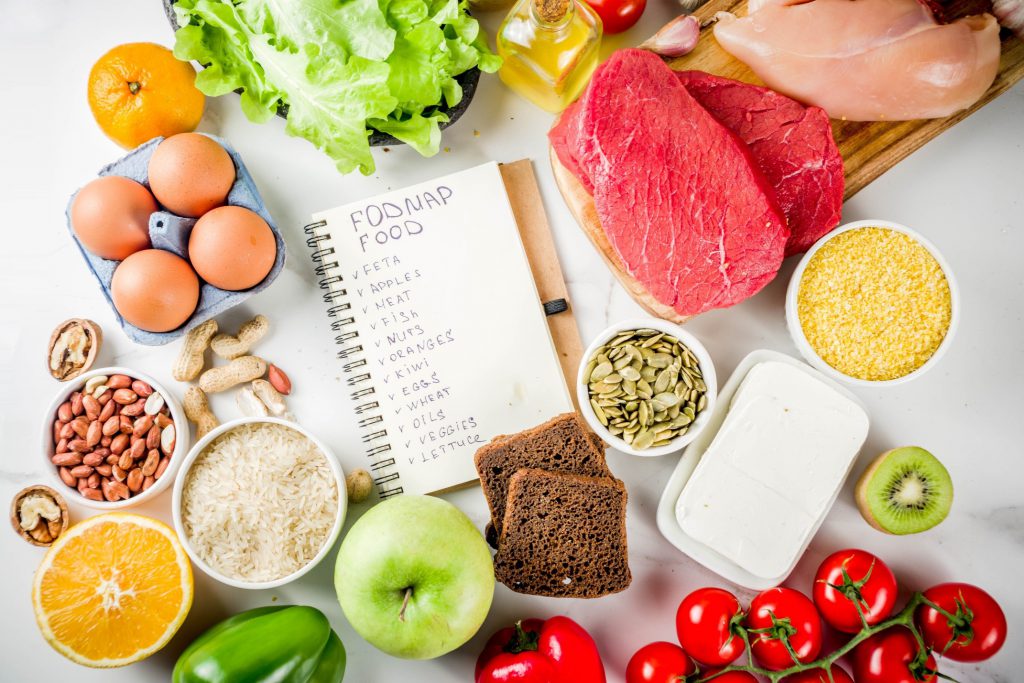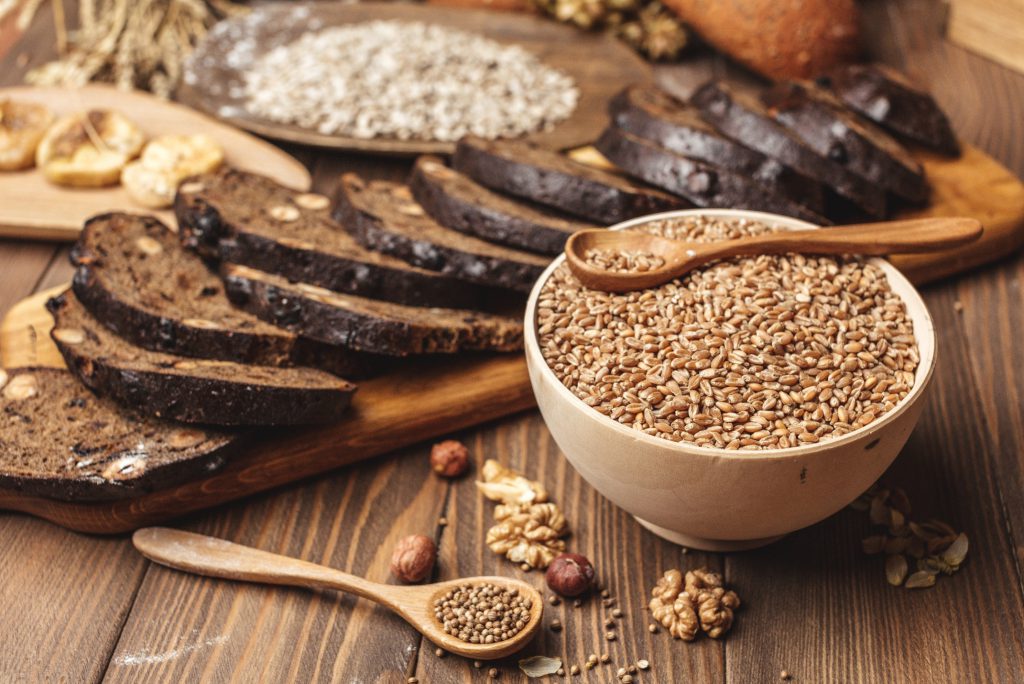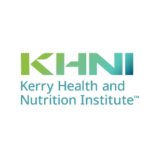What is the FODMAP diet?
The FODMAP diet is an eating pattern designed to help people with irritable bowel syndrome or other gastrointestinal discomfort choose foods that can help them with their symptoms like bloating and abdominal pain. Many consider it to be the next wave of the gluten-free trend. Researchers from Monash University in Australia have conducted much of the work around understanding FODMAPs and that research is the basis for many of the answers in this Q&A.

What are FODMAPs?
FODMAPs are a family of carbohydrates that cause gas, bloating, diarrhea, constipation, distention and pain. FODMAPs are fermented by the bacteria living in your intestines. They draw more water into your stomach and intestines, which can cause more gas to be produced. This gas can lead to bloating and distension in the intestine, which can then cause the muscles in your gut contract, resulting in pain, diarrhea, and constipation.
What Does FODMAP stand for?
Fermentable
FODMAPs are broken down by bacteria producing gas in a process called ‘fermentation’. This produces more gas in your intestines and can cause discomfort.
Oligosaccharides
Oligosaccharides are a number of small carbohydrates found in foods like wheat, onion, garlic, pulses and legumes. They are poorly absorbed by some people and can cause gastrointestinal upset.
Disaccharides
Disaccharides are two simple sugars that are attached to one another. A common disaccharide is lactose, which is found in dairy foods. Many people are intolerant to lactose due to a lacking of the lactase enzyme present in their gut to help break it down.
Monosaccharides
Monosaccharides are simple sugars such as glucose and fructose. Consuming foods that are low in glucose but high in fructose can cause an individual to mal-absorb fructose, which can cause cramping. Such foods include honey, apples and high-fructose corn syrups.
Polyols
Polyols are sugar alcohols, such as sorbitol and mannitol, that are found in some fruits and vegetables. Polyols are often extracted for use as an artificial sweetener and can be found in many manufactured foods in place of sugar. Polyols are known to cause diarrhea at high intake levels.
Everyone is different
Among each of these types of carbohydrates, different people have different sensitivities. The goal of the FODMAP diet is to help each person find which FODMAPs they are specifically sensitive to so they can eliminate those foods from their diet.

Are FODMAP diets backed by science?
Yes. The low-FODMAP diet was developed by doctors and dietitians at Monash University in Australia. Clinical trials of people with Irritable Bowel Syndrome (IBS) has been shown to help IBS suffers reduce their symptoms in up to 75% of patients.
|
Get KHNI articles delivered to your inbox
|
Does cooking break down FODMAPs in a way that would make them easier to digest?
Studies have found that in canning food under acidic conditions, water-soluble FODMAPs can be leached out. So, if you’re eating a low FODMAP diet, you can discard the canning water and wash your legumes before use to reduce your exposure to FODMAPs.
It is also possible that very high temperatures may also break down FODMAPs. However, the extent of this reaction can vary greatly depending on the food being cooked, and the cooking conditions.
Currently, the most reliable approach to reduce FODMAP symptoms is to use low FODMAP diet.
What foods are best for IBS? Examples of low-FODMAP foods
Low-FODMAP Vegetables
- Green beans
- Bell peppers
- Carrots
- Cucumbers
- Lettuce
- Potatoes
- Tomatoes
- Zucchini
Low-FODMAP Fruits
- Blueberries
- Cantaloupe
- Citrus fruits
- Grapes
- Kiwi
- Pineapple
- Raspberries
- Strawberries
Low-FODMAP Grains
- Corn
- Oats
- Buckwheat
- Millet
- Quinoa
- Rice
- Seeds (chia, pumpkin, etc)
- Sorghum
Low-FODMAP Proteins
- Eggs
- Tofu
- Protein concentrates or isolates
- Certain cheeses (cheddar, brie, cottage, mozzarella, parmesan)
- Meats & Seafood
- Peanuts
- Walnuts
Are meats low in FODMAPs?
Animal proteins such as chicken, meat, eggs and fish are low in FODMAPs. However, ingredients used in the preparation of meat foods such as onions, garlic, bread crumbs, marinades and sauces, may contain levels of FODMAPs.
What happens if I take a break from the diet?
The goal of the FODMAP diet is to reduce symptoms and to resume you normal diet slowly at quantities that you can tolerate.
Intake of FODMAPs may not induce symptoms when the overall load of FODMAPs is reduced.
If you do experience gastrointestinal symptoms after consuming FODMAPs, resume the low FODMAP diet and symptoms should improve within one week.
Is this the Low FODMAP Diet for life?
No, the goal of the Low FODMAP Diet is to help your gut heal and to reintroduce certain foods back into your diet over a period of time. Ideally a low FODMAP diet is followed for 2-6 weeks .
After the initial low FODMAP diet, individuals are able to return to their usual eating habits, while only having to avoid very specific high FODMAP foods.
Navigating the trend
Digestive health is one of the top 10 trends in nutrition for 2019 and previous years, meaning plenty of people will be seeking diets like the low FODMAP diet, as well as plenty of companies creating low FODMAP solutions for these people. For both of these groups, there are some watch-outs to keep in mind as well as opportunities to capture.

What are the watch-outs?
The most important watch-out for the FODMAP diet is making sure the diet is still healthy. You may have noticed already, but many high FODMAP foods are also considered healthy foods. Apples, onions, artichokes, yogurt, and more are all foods that might come to mind when someone asks ‘what foods are healthy?’, yet here we see them listed as high FODMAP foods to be avoided for people with IBS.
For people following the low-FODMAP diet, this means replacing healthy high-FODMAP foods with healthy low-FODMAP foods, rather than trying to avoid FODMAPs altogether.
For companies trying to create low-FODMAP solutions, it’s essential to make sure these solutions provide similar nutrition to the foods they are replacing rather than just removing FODMAPs. This means being sure to include vitamins and minerals people would normally be getting from high-FODMAP foods they are eliminating in their diet, as well as polyphenols and non-digestible fibers, when possible.
What are the opportunities for industry?
Food and beverage companies that can create great tasting solutions while also formulating with low-FODMAP foods like those in the table above have a great opportunity get out ahead of a trend that could be as big as the gluten-free trend has been in recent years.
Companies who make strong, science-backed healthy solutions have consistently been able to garner strong followings from consumers on specific diets in the past, and this will continue for the low-FODMAP diet as it spreads across the world. Low-FODMAP certifications do exist for companies wanting to draw consumer attention to their efforts in creating low-FODMAP foods.
Contributor:
-
References
The low-FODMAP Diet – Monash University
What is the FODMAP Diet? Wendy Marcason, RD, Academy of Nutrition and Dietetics
Use of the Low-FODMAP Diet in Inflammatory Bowel Disease. Gibson PR et al. J Gastroenterol Hepatol. (2017)
Low-FODMAP Diet Improves Irritable Bowel Syndrome Symptoms: A Meta-Analysis. Altobelli E et al. Nutrients. (2017)

 We bring the voice of science to some of the most challenging questions facing the food and beverage industry day to day through our network of over 1000 Kerry scientists, external collaborators, and our Scientific Advisory Council. Our content comes straight from scientists and experts in nutrition, taste, food, and sensory sciences to make sure we are providing up-to-date, credible information to guide people shaping the future of food.
We bring the voice of science to some of the most challenging questions facing the food and beverage industry day to day through our network of over 1000 Kerry scientists, external collaborators, and our Scientific Advisory Council. Our content comes straight from scientists and experts in nutrition, taste, food, and sensory sciences to make sure we are providing up-to-date, credible information to guide people shaping the future of food. 

